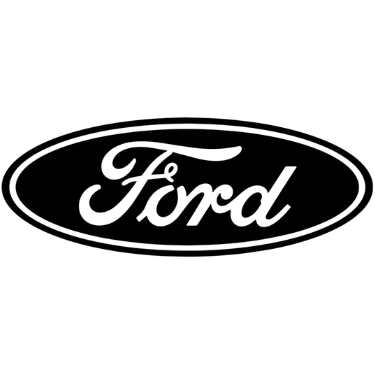If you've had window tint applied to your car, you already know how it improves your driving experience—better privacy, lower cabin temperatures, and protection from UV rays. But once it’s installed, proper maintenance is essential to keep it looking sharp and performing as intended. At Dixie Tint Pros, we often get asked how to clean tinted windows without scratching, peeling, or clouding the film. The truth is: there’s a right way and a wrong way to do it.
Whether you’re cruising through Austin or parking in the Texas sun, clean tinted windows matter. Here's how to do it safely and effectively, especially for luxury vehicles or those with ceramic window tint.
If your auto tint was recently installed, give it time to fully cure before cleaning. Most window tints need three to five days to dry, but Austin’s humidity or colder days in Dripping Springs may extend this period. During curing, avoid rolling the windows down or applying any cleaner. Cleaning too soon can interfere with the bonding process and lead to bubbles or peeling.
Avoid ammonia-based products at all costs. Most household glass cleaners contain ammonia, which breaks down window film over time. It can cause purple discoloration, reduce clarity, and shorten the life of your tint. This is especially critical for blackened windows or high-end tints like ceramic films. Most of the time, a microfiber towel dampened with water will do the trick. In case you need a more robust cleaner, we recommend the following:
Recommended cleaning options:
Paper towels and abrasive cloths are a bad match for tinted windows. They can scratch the film, leave lint, and shorten its lifespan. Stick with a microfiber towel—preferably one used only for glass.
For best results:
This two-step process helps you avoid streaks while protecting the film surface, especially on high-visibility panels like windshields and front side windows.
Once you’ve selected your cleaning tools, follow this simple step-by-step approach:
This method works equally well for tinted glass in the home or office. For larger surfaces like panoramic sunroofs or full rear glass, clean in sections.
The most delicate area on a tinted window is the film edge, where water or chemicals can lift the adhesive. Be especially careful not to oversaturate this zone, and avoid scraping tools or blades that could catch the film.
If your tint is older or bubbling at the edges, cleaning aggressively can make the damage worse. In these cases, you may want to stop by Dixie Tint Pros for an inspection and possible reapplication.
In Texas, where pollen, dust, and hard water spots build up quickly, it’s smart to clean your tinted windows regularly. We recommend:
Vehicles regularly parked near trees or in unshaded areas might need more frequent cleanings to preserve both the film and the glass beneath it.
Ceramic window tint requires the same care as traditional films, but with even more attention to detail. It’s designed to be virtually invisible while providing top-tier heat rejection, so even minor streaks or scratches show easily. Use ultra-clean microfiber towels and never reuse a towel that’s been dropped on the ground or used on paintwork.
For drivers who choose ceramic tint for its clarity and heat protection, proper maintenance is crucial to preserving the finish and maximizing UV blockage.
If you’ve tinted your business or residence, the same rules apply. Window tint for offices and window tint for home installations should be cleaned with:
Note: Window privacy film used indoors can scratch more easily than auto tint because of its thinner construction. Take extra care when cleaning these surfaces.
Austin's hard water can leave mineral deposits on windows after rainfall, car washes, or if you utilize hard tap/well water to clean the windows. To reduce spotting:
And remember—if your old tint starts to bubble, fade, or discolor, our team at Dixie Tint Pros is here to help. We service vehicles across Austin, Lakeway, Dripping Springs, and the surrounding areas.
We provide ceramic and dyed window tints to all of our customers and are an exclusive distributor of Autobahn window films. All of our tints are multilayered and provide protection against scratches, heat, and UV rays
The darkness of window film is regulated based on the Visible Light Transmission or VLT – the percentage of visible light allowed in through the combination of the film and the window. Texas laws contain specific regulations based on the type of vehicle. The requirements for sedans, SUVs and vans are as follows.
- Windshield: 25% VLT tint is allowed above the manufacturer’s AS-1 line or top 5 inches, with less than 25% reflection
- Front Side Windows: Must allow more than 25% of light in
- Back Side Windows: Any level of darkness
- Rear Windows: Any darkness can be used with side outside mirrors, 25% VLT without.
For more information visit the Texas Department of Public Safety’s website here.
The cost of window tinting can vary depending on the size of your vehicle, the windows you want to tint, and the type of film you choose. Generally, the larger the vehicle and the higher the window counts, the more it will cost. Premium Window Films, like our Nanoflex Premium Ceramic window film, start around $125 per window while our quality cost effective Carbon Terraflex Window Films can be as low as $59 per window. Despite our business being window tints, Dixie Tint Pros is completely transparent when it comes to pricing. You will know your out-the-door cost before you arrive at one of our stores, if you request a quote from us.
The short answer is no, it is not illegal to have window tint on your car’s windows. However, Texas regulates the amount of light that your tint can block. Your vehicle tint must follow Visible Light Transmission or VLT standards established by the state of Texas. For more information about Texas Window Tint Laws, visit the Texas Department of Public Safety’s website here.
Carbon tints are made from sheets of polyester or another laminate materials that include microscopic Carbon particles that, depending on quantity, can provide varying shades from very light to very dark. Ceramic window tint is the highest quality window film on the market and is made from polyester or laminate based sheets. They are available in a variety of shades and colors. The main difference between ceramic tint and carbon tint is that ceramic tint is coated with ceramic particles at the end of the manufacturing process. Ceramic tints blocks visible sunlight, adds privacy, blocks harmful UV rays, glare, and heat.



















